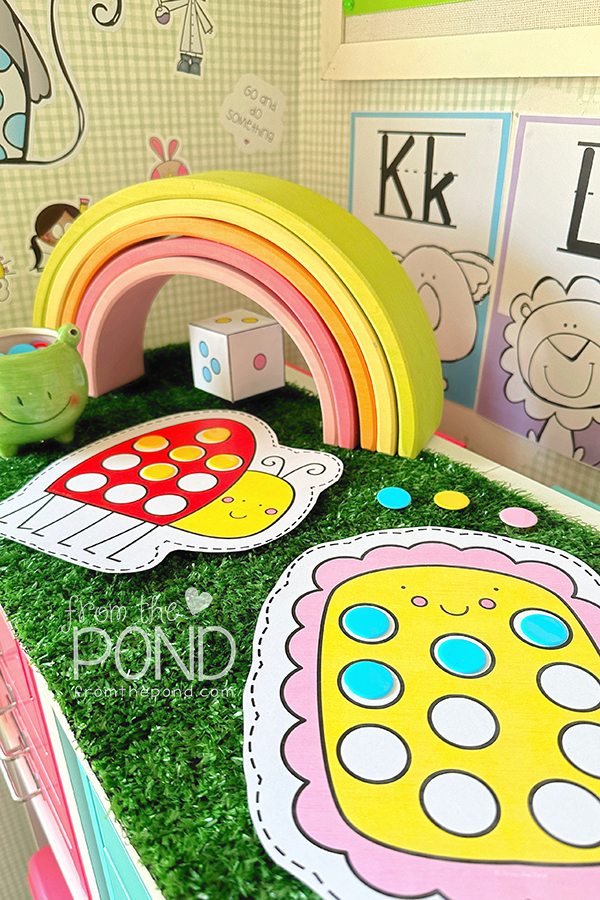It helps children
- understand the concept of quantity
- compare numbers
- develop number sense
Here is just one game to play with the ladybug and flower mat from the Making 10 Play Mat pack.
Ladybug & Flower Number Game
- at the small group math table give each of your students a flower and access to counters
- you have the ladybug and have it positioned for stduents to see clearly
- have a sheet of paper (floral scrapbook paper would work well) to conceal the ladybug when needed
- make a number for students to see on your ladybug - you can have them count it with you as you make it, or make it and let them discover the number for themselves
- give your students 30sec-1 minute to look at the number and remember it
- hide the counters by concealing your ladybug under the paper
- give your students time to make the same number on their flower
- check all numbers by counting and comparing
- play several times with different numbers
- increase the difficulty by giving your students less time to see the number and concealing it while you make the number
- use the opportunity for math talk between numbers - ask them to describe the different arrangements and understand that the same number can be arranged in different ways - e.g. one student has made 5 with 3 pink and 2 yellow counters around the edge of the flower and another has grouped 4 orange and 1 green counter in a group at the bottom of the flower
Playing with equipment is one way to help your students visualize numbers. You could also play more structured number games or incorporate movement and music into math lessons (clapping numbers to match pictures etc). As well as building a mental picture of numbers your students will develop problem-solving, critical thinking, and collaboration skills.
When children play with numbers, they are actively engaged in the learning process, manipulating objects, exploring patterns, and making connections. This hands-on, minds-on approach to learning helps children develop a deeper understanding of mathematical concepts.
Join my newsletter community (it's free) for more support, ideas and news of resources in store.


